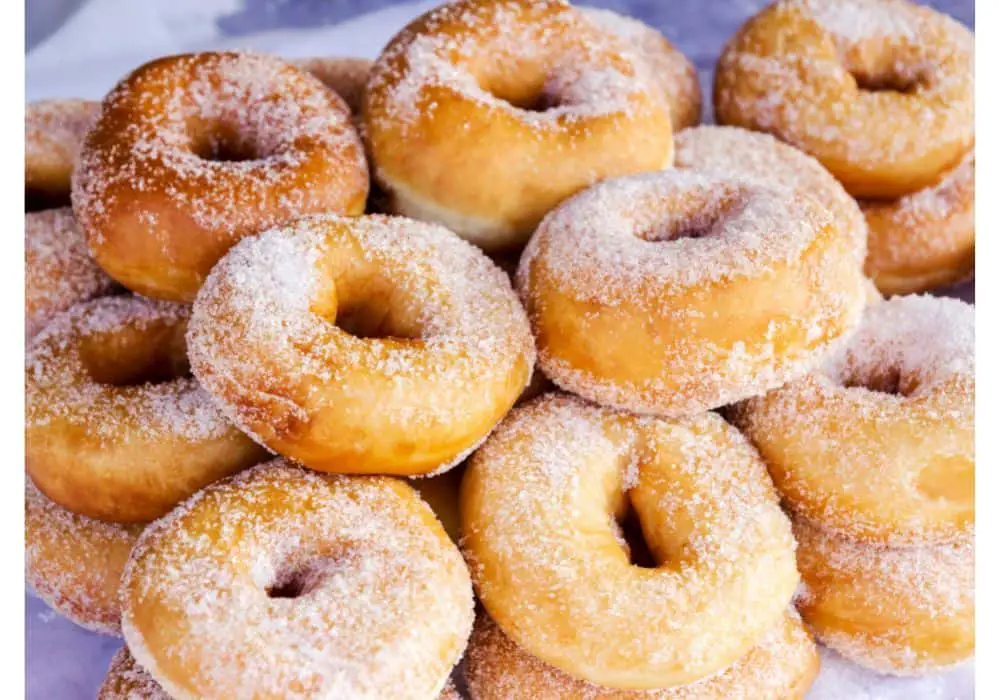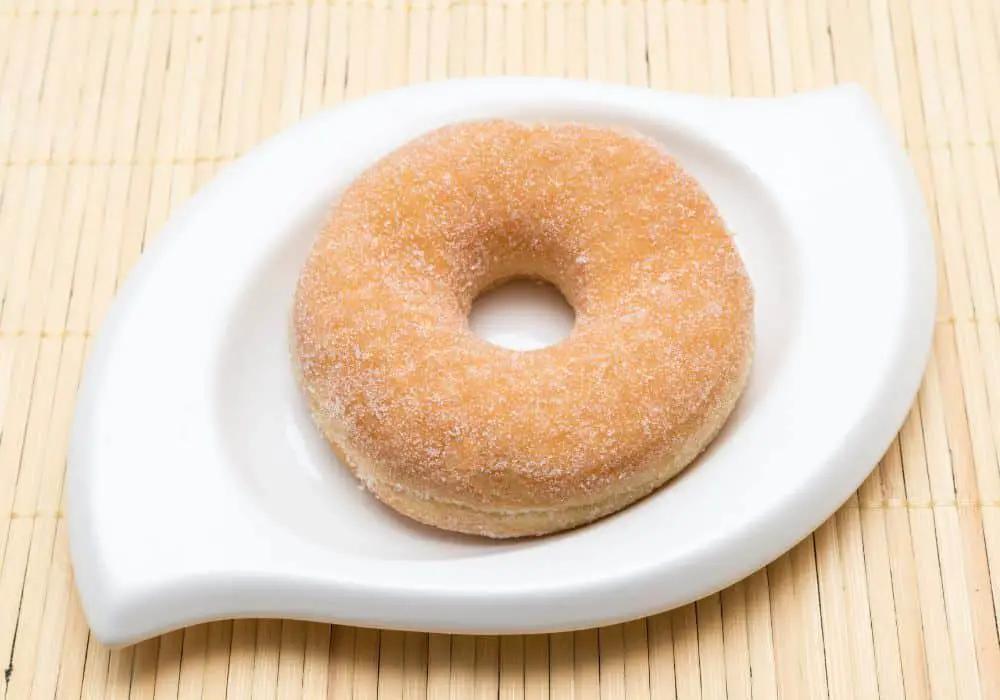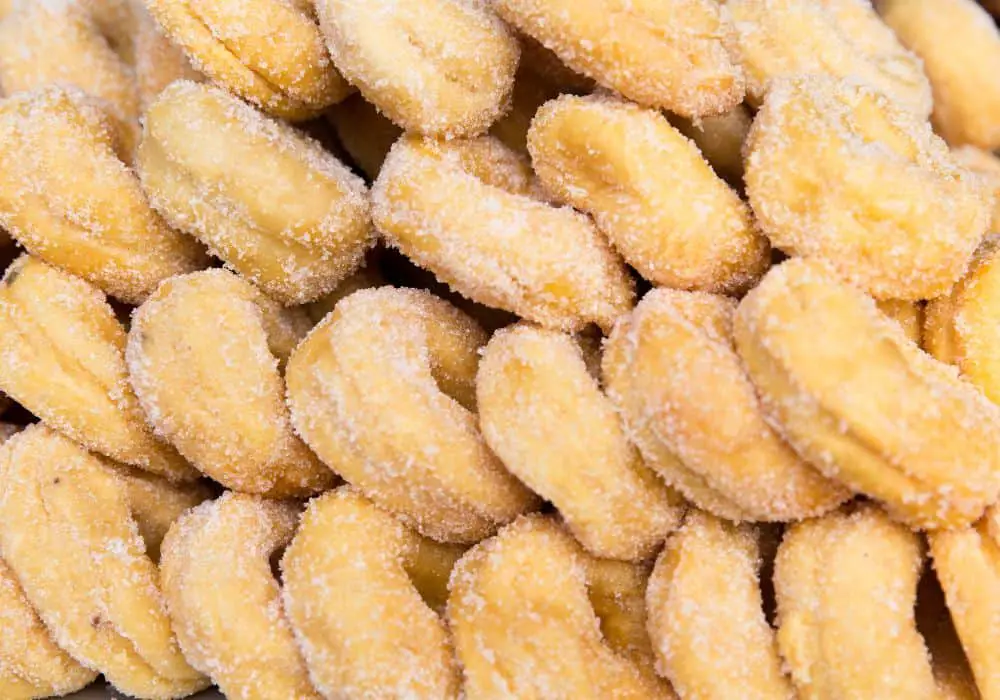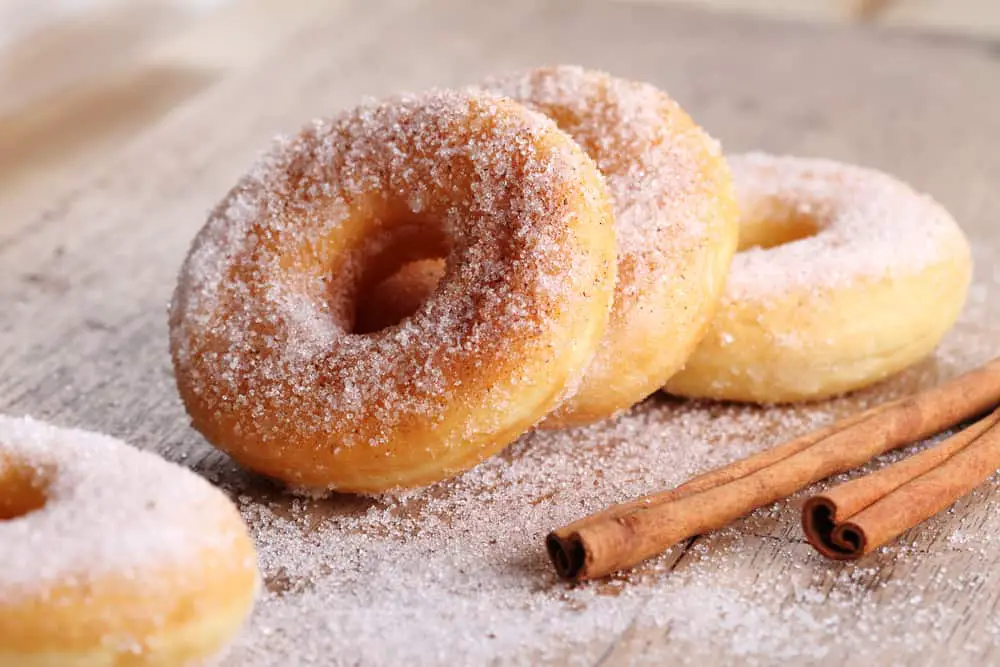When we think of comfort food across the ages, few things have stood the test of time as well as the sugar donut. Sure, donuts now come in all manner of shapes and sizes, flavours and accompaniments, sprinkles and fillings. But when you boil things down to their essential elements, the sugar donut remains the totemic king.
Today, we’re going to be giving this all-time classic the space and attention it deserves. We’ll be taking a look at where the sugar donut comes from, where it stands in the world today, and how to make it yourself!
Dust off your apron and dust out some sugar. We’re about to do dessert the way it’s meant to be done.
What are sugar donuts?

In an international donut market that’s crowded with flavours and fillings, what exactly is a sugar donut? Don’t all donuts come with sugar?
Most do, and you’d be forgiven for thinking that there are thousands of donut recipes out there that could claim to be ‘sugar donut’ recipes. However, what we think of when we think of a sugar donut is the classic, simple, sugar-glazed or sugar-dusted variety.
Similarly, sugar donuts are usually (but not always!) donuts that come with a hole in the middle. Because the main focus of their flavour is in the dough and sugar coating, rather than in some form of fancy filling, they don’t need to be ‘whole’ doughnuts the same way jam or custard varieties do.
Where do sugar donuts come from?

Doughnuts, in the form we know and love them today, probably have their origins going back centuries. Indeed, it can be difficult to establish with any certainty who made the first ‘doughnut’ as we would recognise them. Archaeologists and historians have been digging up evidence of human beings eating sweetened and fried dough that stretches back millennia!
In the West at least, the doughnuts we tend to go for today appear to have their clearest ancestors in dough cakes brought to America by Dutch settlers in the 17th century. ‘Oelykoeks’, or ‘oily cakes’, as they were then known, appear to have been a cheap, tasty, and filling way of keeping people’s calorie count up.
By the 19th century, doughnuts were starting to be viewed as identifiably American cuisine. It’s also around this time that people think the trademark hole began to appear in the middle. There are many different origin stories for this!
One popular one ascribes the invention of the hole in the middle to a travelling seaman, Hanson Gregory. It is said that, in 1847, and at just 16 years old, Gregory decided that he wasn’t happy with the loose, doughy consistency at the centre of the fried cakes served aboard his ship. He suggested they punch a hole in the middle of the batter, so that it could be more evenly fried and cooked.
Other theories have it that the hole in the middle made it easier for market traders and food stall owners to carry about their wares. The hole meant they could carry them on poles or loop string through them. Whether this is the case or not, who knows, but it makes for a neat story!
Ingredients

Time to take a look at how to make these classic crowd-pleasers. The recipe we’re about to follow is an adaptable and straightforward one. In fact, if you’re new to making doughnuts in general, we think this is a great recipe to start out with.
You’ll need a bit of patience to allow the dough to rise, but the ingredient list is uncomplicated. You might even find you already have all of this hanging about in your larder.
We’re going to follow a recipe that makes 16 donuts in total. If you want to adjust that up or down, feel free to juggle the below measures. However, we recommend you make at least 16, so that you have plenty to share with family and friends!
- All-Purpose Flour – 3 cups (361g)
- Granulated White Sugar – ¼ cup (50g)
- Table salt – ½ teaspoon
- Instant Yeast or Active Dry Yeast – 2 teaspoons
- 1 Large Egg
- Milk – 1 cup (227g), preferably whole milk for richness, but semi-skimmed can also work
- Melted butter – 2 tablespoons (28g), unsalted will give you more control over sodium levels
- Vanilla extract – ½ teaspoon
- Oil for frying – roughly 6 cups, best to choose one that has a high smoke point and relatively neutral flavour. Vegetable, sunflower, or canola oil all work well.
- Extra granulated sugar for coating the donuts
Step-by-step instructions
Using a stand-mixer with a dough hook will make your job easier, but doing things by hand is also fine. We also find that hand mixing and kneading can be a bit more satisfying, even if it proves a bit more tiring.
Step 1
Briefly stir together your flour, sugar, salt, and yeast in a large mixing bowl. They just need to be blended nicely. Make sure you don’t put salt directly on top of the yeast.
Step 2
In a separate bowl, whisk together your egg, milk, the melted butter, and vanilla extract. Then add all of this to the mixing bowl with your dry ingredients mixture. Knead or mix together until it makes a soft dough. Cover with a tea towel or cling film and let it rest for 5 minutes.
Step 3
After it has rested, knead the dough for a further 6 to 8 minutes, until it’s smooth, soft and pliant. You then need to place the dough in a greased bowl. Turn it over in the bowl a few times so that it’s coated on all sides with the oil. Cover the bowl and let it rest for 1 ½ to 2 hours. It should roughly double in bulk!
Step 4
Once the dough has risen, deflate it by giving it a light punch. Turn it out onto a floured surface and roll it out with a rolling pin until it’s roughly ¼ inch thick.
Step 5
It’s now time to cut out your doughnuts. Best to use a cookie cutter or donut cutter to do this – 3 ½ inches or so should do the trick. You can then use a smaller cutter to put holes through the middle. Otherwise you can just form holes using your fingers.
If you don’t have a cookie cutter at all, you can do the whole thing by hand. Try to make sure you keep your donuts as equally shaped and sized as possible. This should ensure that they cook evenly when going into the fryer.
Step 6
Once you’ve shaped your dough into individual donuts, it’s time to cover them up again with plastic wrap and let them rest for another 30 minutes to 1 hour. To help with the next stage, we recommend having them sit on greaseproof or parchment paper while they rise.
This is the last resting stage, and it should see your doughnuts double in size once again!
Step 7
Heat your oil in a heavy frying pan or skillet. You want to get the temperature to 350 degrees Fahrenheit and we recommend using a cooking thermometer if you have one. Much hotter and your doughnuts could burn. Cooler than this and they’re unlikely to cook properly.
Carefully place each donut in the oil, 2 or 3 at a time, and fry them until they turn golden brown all over, turning once. It should only take a minute or so on each side to get the tint you’re looking for!
Step 8
Remove donuts from the oil using a slotted spoon and drain on absorbent paper, or in a sieve over absorbent paper. Let them cool down enough to handle before going to the final stage.
Step 9
Place sugar in a bowl and roll your doughnuts in them to coat all over. You can also, if you wish, pass on the sugar dusting and coat them in some form of glaze instead.
The great thing about sugar donuts, apart from how tasty they are, is their versatility. You can dip them in chocolate, roll them in a cinnamon sugar mixture, or fill them in the middle with jam or vanilla cream rather than cutting out the centre and leaving doughnut holes.
Nutritional facts
- Sodium: 97mg
- Calcium: 23mg
- Vitamin C: 1mg
- Vitamin A: 83IU
- Sugar: 16g
- Fiber: 1g
- Potassium: 64mg
- Cholesterol: 16mg
- Calories: 919kcal
- Trans Fat: 1g
- Saturated Fat: 8g
- Fat: 87g
- Protein: 4g
- Carbohydrates: 35g
- Iron: 1mg
Final thoughts
We hope you’ve enjoyed this whistle stop tour of a timeless classic. The great thing about sugar donuts is not just the history they’ve enjoyed, but just how versatile they are.
Once you master the sugar donut in the kitchen, the sky’s the limit in terms of where your doughnut making career goes next!
FAQs
Are sugar donuts gluten-free?
Using the recipe above your donuts won’t be, but there are plenty of easy ways to make them gluten-free! The easiest is simply to swap out your all purpose flour for gluten-free flour. You can also check out this gluten-free doughnut recipe video here!
Are McDonald’s sugar donuts vegan?
Unfortunately, McDonald’s trademark sugar donuts are usually made with whole egg powder, which means they can’t be classed as vegan.


What s the difference between caster sugar and extra granulated sugar?